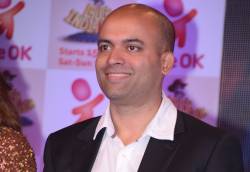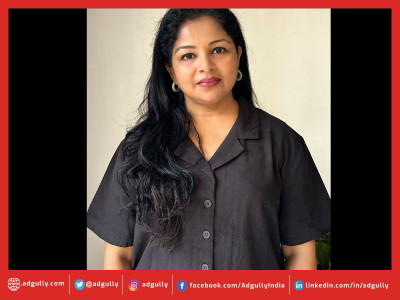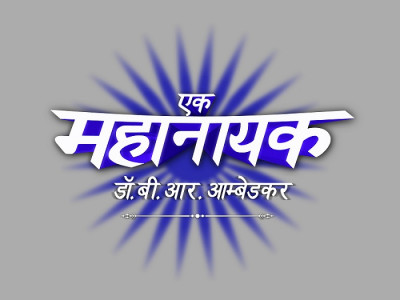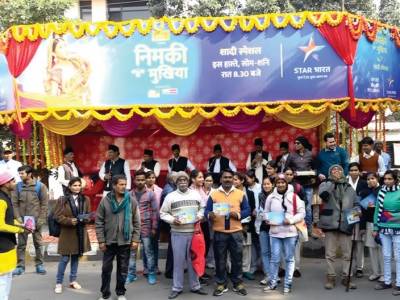Perspective | Are Hindi GEC's actively working on community based content?
Going retrospective in an effort to understand how the popular element of ‘daily soaps’ emerged in entertainment , the first Hindi daily soap aired on Doordarshan in 1984 viz. 'Hum Log' cannot be erased from the mind’s of television viewers. Demographics prove that shows including Ramayana and Mahabharat were then widely watched with no communal bias. As television has progressed from Doordarshan to multiple channels on cable TV system and presently to set-top boxes, it is seen that concepts, genres and formats too have increased drastically with experts from the media industry experimenting to engage with their audiences.
Nowadays family soaps are mostly based on different communities , states, languages and religion and these shows are not only grabbing audience’s eyeballs but leaving an impression too. Be it Zee TV’s 'Pavitra Rishta' (Marathi), 'Qubool Hai'(Muslim) Star Plus’s 'Diya Aur Baati Hum' (Rajasthani) Sony's ‘Amita Ka Amit’(Gujarati) Colors ‘Baani’ (Punjabi) ‘Sanskar’ (Gujarati) Life OK's ‘Savitri’ (Bengali) ‘Kaisa Yeh Ishq Hai, Ajab Sa Risk Hai’ (Haryanavi) or Sab TV’s ‘Tarak Mehta Ka Ulta Chashma’ (Gujarati), all these serials showcase a certain community.
To understand the reason behind producing such shows and the opportunities they present, Adgully spoke to industry experts to understand their views on the rationale behind working on community based concepts. Is it because the channel has a strong set of audiences who belong to certain communities and the channel wishes to strengthen the bond by providing content to which they can relate to or on the other hand the channel not having strong viewership in that particular community is keen to create a bond by providing content with whom a particular set of audience can relate to .
We spoke to industry experts like Ajit Thakur, General Manager, Life OK; Zee TV’s Content Head, Ajay Bhalwankar; Anooj Kapoor, EVP and Business Head, SAB TV and Swastik Productions Founder and Owner, Siddharth Tewary who shared their respective views with us.
Ajay Bhalwankar sharing his views on this particular subject said, “I don’t feel that community based shows happen because we follow a certain community but because it depends upon the story and the concept.
“I don’t think that we can make a show for a one specific community and expect it to work, the show actually works when it gets accepted by everybody,” added Ajit Thakur.
Meanwhile Siddharth Tewary shared his view by saying, “There is nothing which is pre –decided, a certain community based plot is selected because the story demands it.”
Anooj Kapoor in this regard said, “For us at SAB we don’t work for any specific category or audience as our tagline itself defines what we are targeting- it’s for everyone.”
Explaining further about their shows they said, “Pavitra Rishta is popular in Bhatinda, so also in Kolkata and Bhopal. So, when we select a concept and we work on a certain story and we see which background suits it the best. With the Pavitra Rishta story it was about an educated girl who wanted to work and is willing to help her family; the Maharashtrian community went well with the story and we chose that,” said, Bhalwankar.
Thakur explained, “I feel every story needs a different flavour and that’s where we try to bring in different cultures. For example our show ‘Savitri’ has Kolkata as it’s base because the lead is been shown growing up in a Missionary Charity which is a widely prevalent in Kolkata. Our new show is based in Haryana because we had to project a family that’s tough from the outside but soft at heart and Haryanvi’s are like that.”
“Reason for choosing Gujarati backdrop for the show ‘Amita Ka Amit’ was that, Gujaratis are very colourful in nature and the concept demands that so we showcased a modern Gujarati family settled in Mumbai, but it was accepted by everyone,” says Tewary.
Kapoor added, “More than portraying a certain group or community we believe in bringing in new elements of entertainment. We also have different shows that are for everyone such as ‘Tarak Mehta Ka Ulta Chashma’ which has characters from different communities and liked by everyone in the country.”
Just as various cuisines from different parts of the country, are difficult to resist so also with television shows which need to be sampled and watched before they are accepted by one and all.
On a concluding note, Bhalwankar said , “We do not get our TG’s because of community based shows.” Whereas Thakur giving his viewpoint said, “One should make such a show that will engage audience of different communities and the concept and content should be acceptable to all.”
Tewary’s sharing his perspective said, “India is a diverse country and so it’s important to have every flavor which showcases different cultures, traditions, communities and more over colour of life. So just sticking to one specific group is not going to work.”
He went on to add, “I don’t have much to say as I feel the content should be such that an individual should be able to enjoy a show and in that case a certain group and community does not matter, as it is very important that Hindi GEC’s provide entertainment to everyone.”
With the industry experts having shared their thoughts and insights , we can conclude that , it is now time for viewers themselves to decide and choose their favourite shows irrespective of the communities portrayed in them .





















Share
Facebook
YouTube
Tweet
Twitter
LinkedIn